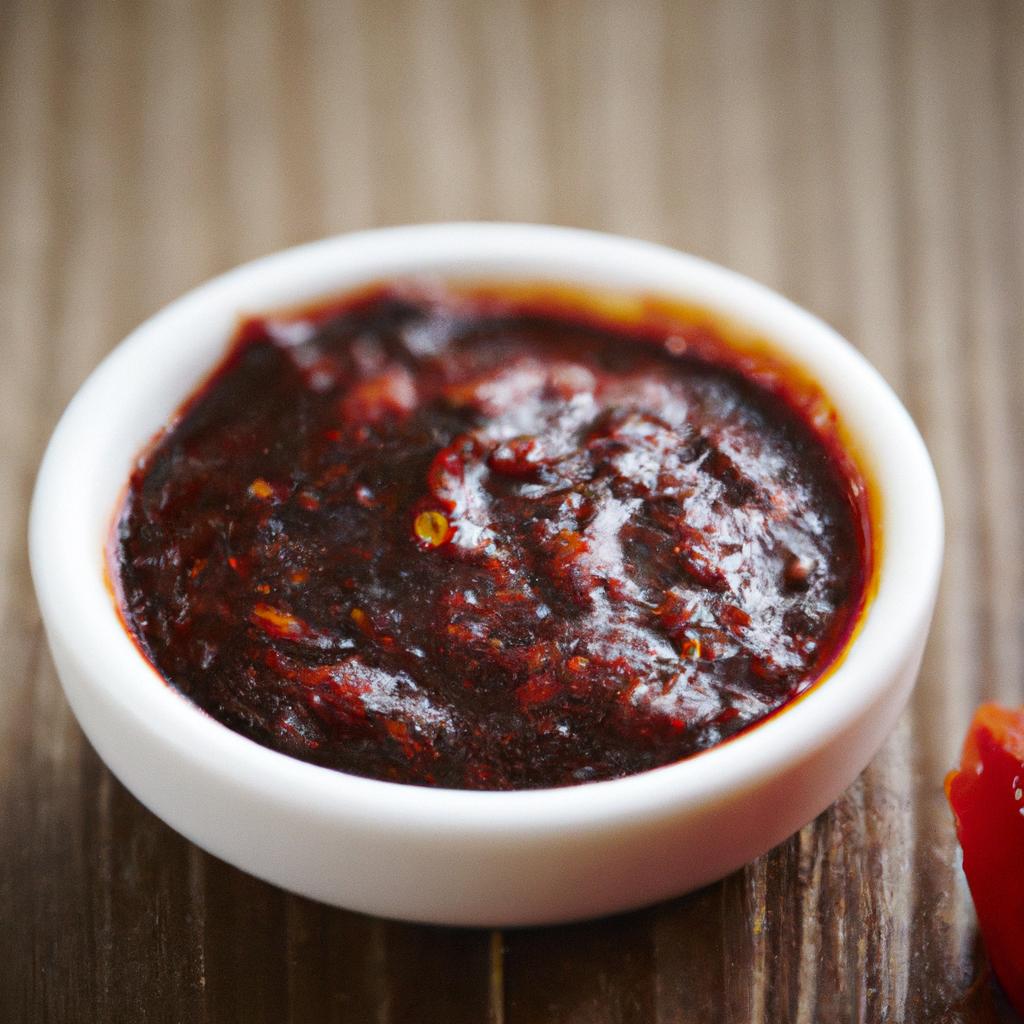Ssamjang sauce

Korean cuisine is known for its diverse range of flavors, spices, and seasonings that bring out unique taste combinations. Among the many sauces that are used in various Korean dishes, one of the most popular is ssamjang. This paste-like dipping sauce is a staple in Korean cuisine, used to enhance the flavors of grilled meats, vegetables, and wraps.
Ssamjang literally means “wrapped sauce” in Korean, which is a nod to its common use in Korean wraps known as ssams. The sauce is made from a blend of Korean fermented soybean paste (doenjang), gochujang (Korean red chili pepper paste), garlic, sesame oil, and a few other spices.
Although ssamjang is widely available in Korean grocery stores and restaurants, there’s nothing quite like making it at home from scratch. With this easy-to-follow recipe, you can elevate your Korean culinary skills and enjoy the authentic taste of ssamjang in the comfort of your own home.
One of the key components of ssamjang is doenjang, which is a paste made from fermented soybeans. It’s similar to Japanese miso paste but has a richer and deeper flavor. Doenjang is a key ingredient in many Korean dishes, including soups, stews, and marinades. You can find it at most Korean grocery stores or online.
Gochujang is another important ingredient in ssamjang, which adds a spicy and slightly sweet flavor to the sauce. It’s traditionally made by mixing soybean powder, glutinous rice powder, and red pepper powder and then fermenting the mixture. Gochujang is also widely available in Korean grocery stores and can be found in mild to very spicy varieties.
To make ssamjang, start by mixing together equal parts of doenjang and gochujang in a bowl. You can adjust the ratio of doenjang to gochujang to suit your personal taste preferences. Next, add minced garlic, chopped green onions, sesame oil, and vinegar to the bowl and mix everything together until well combined.
The resulting sauce should be thick and paste-like, with a rich and complex flavor that combines savory, spicy, and slightly sweet notes. You can adjust the seasoning to your liking by adding more garlic, green onion, or even a bit of sugar to balance out the flavors.
Ssamjang is typically served alongside grilled meats such as bulgogi, galbi, or pork belly, as well as cooked vegetables such as mushrooms, spinach, or lettuce. To eat ssamjang, simply wrap a small piece of meat or vegetable in a lettuce leaf or steamed rice paper, add a spoonful of ssamjang on top, and enjoy the explosion of flavors in your mouth.
In addition to its use in ssams, ssamjang can also be used as a dip for vegetables, a marinade for meats, or even as a spread on sandwiches or burgers. Once you make a batch of this versatile sauce, you’ll find endless ways to use it in your cooking.
Overall, ssamjang is a quintessential Korean condiment that adds depth and complexity to a wide range of dishes. By making it at home, you can experience the full flavor potential of this versatile sauce and take your Korean cooking skills to the next level.
Here is a recipe for Korean Ssamjang sauce:
Ingredients:
- 1/2 cup doenjang (Korean soybean paste)
- 1/4 cup gochujang (Korean chili paste)
- 2 cloves garlic, minced
- 2 tablespoons sesame oil
- 1 tablespoon sugar
- 1 tablespoon rice vinegar
- 1 tablespoon toasted sesame seeds
- 2 green onions, thinly sliced
- 1 tablespoon water (optional)
Directions:
- In a medium bowl, whisk together the doenjang, gochujang, garlic, sesame oil, sugar, rice vinegar, sesame seeds, and green onions until well combined.
- If the sauce is too thick, add water 1 tablespoon at a time until desired consistency is reached.
- Taste and adjust seasonings as needed.
- Serve with grilled meat, vegetables, or rice. Enjoy!